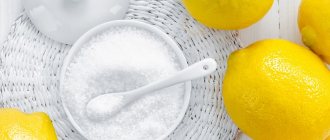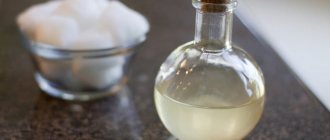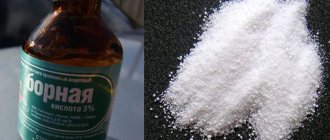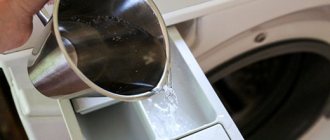Lemon that kills
It’s a strange phrase, because for everyone, lemon juice is an invariable helper not only in the kitchen, but in general in everyday life. But if you think correctly, then lemon really kills. After all, it completely destroys bacteria. And here it is better to use not natural fresh juice, but lemon juice from citric acid. If you wipe the cutting board with a solution of citric acid, you can get rid of all the bacteria that many commercial products cannot destroy.
Lemon juice prevents the development of pathogenic bacteria that cause dysentery. By the way, in this case, you can also make lemon juice from citric acid at home. In this situation, it can easily replace the natural one.
Household use
- We clean the scale. Fill the electric kettle with water, add 30-50 grams of acid and boil for 5 minutes. Shake the liquid inside the kettle and pour out. May be repeated several times until the result is satisfactory. After cleaning, it is recommended to boil clean water.
- We wash the dishes. To give your dishes shine and freshness, prepare a solution with the following content: 5 grams of lemon per 1 liter of water.
- We clean the plumbing. The plaque formed in the bath can be removed using a simple recipe: pour 200 grams of acid with hot water (the bath must be full). Leave for 8 hours and drain. After turning on the shower, wash the entire surface with a sponge.
- We remove stains from clothes. Stains of various types are removed using a solution: 1 teaspoon per 1 glass of water. The problem area is immersed in liquid for 2-3 minutes, after which it is washed in warm water using washing powder.
- We water the plants. Citric acid is used as a disinfectant, antibacterial and immunostimulating agent for plants. To do this, prepare a solution: 1 teaspoon of acid per 5 liters of water. Water no more than once a month.
- We fight domestic insects. In this case, there is no need to prepare solutions. It is enough to sprinkle the powder in those places where there is a massive accumulation of ants. To kill cockroaches, pour the powder into a garbage can.
Citric acid has found wide application in almost all areas of our lives, becoming a necessary product for baking, preserving food and making drinks. There are also many places in everyday life where citric acid is used. With a little ingenuity and patience, you can prepare this product at home.
Interesting Facts
Surely everyone will be interested to know:
- In the 18th century, this sunny fruit was available only to bohemians. It was possible to get bright fruits in Holland. They came to our country only in salted form. Then no one even asked the question of how to make lemon juice from citric acid, since they did not yet know how to extract this very acid.
- Our regular cabbage is more healthy than bright citrus. After all, it contains more vitamin C. And even more of this useful substance is in rose hips.
- Citrus juice will help with fever. Although in this situation it is also better to make lemon juice from citric acid, the proportions are different. You need to throw a little into cool water, by eye. This solution is rubbed into the ankles, arms and back. In ten minutes the temperature will drop by one degree.
How to drink water with citric acid for medicinal purposes
The substance can be consumed in its pure form only in very small quantities. However, even under this condition, it is successfully used in folk medicine.
- The benefit of citric acid for gout is that when this substance enters the body, it prevents the deposition of salts in the joints and normalizes purine metabolism. To treat and prevent gout, it is recommended to regularly take citric acid diluted with water before eating.
- The benefit of citric acid as an acidity regulator is that the substance relieves heartburn. To eliminate the unpleasant sensation in the stomach and esophagus, you need to dilute the acid with an equal amount of soda, add a glass of water and drink in small sips. However, for chronic heartburn and gastritis with high acidity, it is better not to use the product - its properties can aggravate the condition if taken regularly.
- The substance effectively helps with sore throat; it needs to be diluted in water and rinsed every hour.
If you have a hangover, a healthy drink based on soda and citric acid will quickly relieve nausea and tachycardia. You can add a little sugar to it, you need to drink the medicine slowly and in small sips.
Useful tips
The reader may not be aware of the following important properties of lemon:
- If it becomes more and more difficult to fight depression, you need to cut the fruit into slices and spread it around the apartment. The smell of this southern fruit lifts your spirits well.
- Sunny citrus also helps with insomnia. You just need to squeeze a slice of lemon into a glass of water before bed. It will be much easier to fall asleep after such a drink.
- Lemon also helps with calluses. First you need to steam your feet, and then apply a slice of fruit to the damaged skin and put on socks. True, it will take from 10 to 15 similar procedures to get rid of the callus forever.
- If not only the taste is important, but also the benefits, then you should not add lemon to boiling water, as this will destroy vitamin C.
This fruit with a bright skin has a lot of useful properties. He can be a therapist, a nutritionist, and a cosmetologist.
Lemon juice in cosmetology
Citrus juice will help get rid of acne and age spots on the face. If you regularly wipe your face with lemon juice, your skin will become lighter and acquire a healthy glow.
An excellent remedy against inflammation on the face is a mask of lemon juice with white clay. To get the desired effect, it is enough to leave this mixture on your face for just fifteen minutes.
You can freeze lemon juice with water. These cubes are very pleasant to wipe your face after washing your face in the morning. This procedure will help make the skin matte and give it a beautiful glow.
Lemon juice against age spots
If you mix starch with lemon, you can fight age spots. You need to dilute a tablespoon of starch with lemon juice until the mixture becomes viscous. The mask is applied only to the spots for twenty minutes. Then it needs to be washed off.
If you mix lemon and hydrogen peroxide, you can easily whiten your skin. To do this, two tablespoons of peroxide are mixed with juice squeezed from half the fruit. Dip gauze into this solution and apply to the stains for half an hour. The procedure must be repeated for ten days. This solution dries the skin very much, so you will have to stock up on rich cream and fermented milk masks.
The easiest way to prepare juice is to take the fruit and squeeze the juice out of it.
Citric acid has many benefits
It definitely won't rot or dry out. It does not need to be stored in the refrigerator; there is enough space for it on a shelf in the closet. The most important thing here is not to confuse it with anything. There are a lot of powders on the shelf. It will be very annoying if, for example, a pan of okroshka suffers because sugar was added instead of lemon.
The most interesting thing is that the answer to the question of how to make lemon juice from citric acid is quite simple. You just need to mix this very acid with water. It won't take more than a minute. Proportions are another matter. It all depends on the purpose of using this liquid. But the manufacturer will not affect the taste of the drink in any way, since all citric acid is the same. Its quality does not depend in any way on the place of production.
What is citric acid
This is a food supplement. It is used both in canning and in confectionery production. If you mix acid with soda, bubbles of carbon dioxide begin to be released. This helps improve the quality of the test. It becomes more magnificent and airy.
Lemon in itself does not pose any danger, but if the concentrated solution gets on vulnerable areas of the body, it can cause a burn.
This substance also negatively affects tooth enamel. Inhaling citric acid powder is strictly prohibited; it can cause a burn to the respiratory tract. The juice used in cooking contains no more than five percent acid.
For example, if one tablespoon of juice is required, then the acid content in it will not exceed seven hundred milliliters. That is, you need to use no more than one-sixth of a teaspoon.
If you need to do sugaring, then you need to take ¼ teaspoon. Here the juice is replaced with acid if it causes allergies or irritation. Often women use citric acid instead of hair conditioner. After washing, you need to rinse your hair with a solution of water and lemon. One teaspoon per liter of water.
Harm of citric acid and contraindications for use
The benefits and harms of citric acid for the human body depend not only on the dosage, but also on the state of health. It is prohibited to use the substance:
- for stomach ulcers and open ulcers of the esophagus and oral cavity,
- if you are allergic to citric acid,
- with increased stomach acidity,
- for sensitive tooth enamel.
When using the substance, you must always observe the minimum dosage - no more than 5 g of the supplement per day. When cleaning surfaces, you can handle acid only with rubber gloves, avoiding contact with mucous membranes and eyes.
Cooking process
First, you need to measure out one teaspoon of citric acid powder. Then pour it into a clean, dry cup. The container should be made of glass or porcelain. The acid may react with the metal. For example, aluminum itself will darken, and the juice will turn into a dark, unpleasant color.
Now warm purified water is added to the mug, preferably boiled. There should be exactly twice as much water as acid. Of course, you can use cold water, but then the acid will take longer to dissolve. You will have to wait about seven minutes, but do not forget to stir the solution. But if the water is warm enough, the juice will be ready instantly.
Many housewives are wondering how to make lemon juice from citric acid for a cake. Answer: the same. The proportions are always the same if you need juice. It’s the same here whether for confectionery or for salads. It’s another matter if you need not juice, but a solution. There may be many options here. Some of them have been listed above.
Of course, you should never rinse your hair with artificial lemon juice. There is a risk of burning not only the skin, but also damaging the eyes. A much weaker solution is needed here.
With citric acid, although it is considered food grade, you need to be extremely careful. After all, it is an acid. You should not drink artificial lemon juice. It can only be used in small quantities during cooking.
The lemon bottle should not be placed on an open surface if there are children in the house. After all, if you taste it with the tip of your tongue, it may seem very tasty. But in large quantities it can cause enormous harm to the child’s body.
Culinary tricks
Citric acid is a product that must be used correctly in cooking. Every housewife should know some tricks of use.
Why do they add it to dishes and drinks?
Citric acid is added to dishes and drinks to improve or adjust the taste (if the food is over-sweetened or lacks sourness); the additive is also used as a preservative and acidity regulator.
How to dilute acid to lemon juice?
To make acid-based lemon juice, you should adhere to the following proportions: use 4 g of additive per 100 ml of water. But in general, the amount of acid depends on taste preferences, since the juice can be made more sour or more tender.
On average, you can use 5 g (or 1 tsp) of citric acid instead of 1 small lemon.
How to make pop from citric acid?
To make the pop, you will need citric acid, powdered sugar, baking soda and water. In a clean glass or ceramic container, mix 1 tsp. soda with 3 tsp. acid until a homogeneous mass is formed, then add 1 tbsp. l. powdered sugar and mix again.
The workpiece is diluted at the rate of 1 tbsp. l. dry mixture per 200 ml of water.
The dry mixture can be made in advance and stored in a glass jar with a tight lid (in a cool, dark place) for 1 month.
When and how much to add?
The acidic crystalline powder is added during the preparation of many dishes, such as borscht, baking dough, in alcoholic and sweet drinks, as well as in canned food.
In borscht
When preparing borscht, acid is used not only to add a piquant taste, but also to preserve the bright color of the beets. For a medium pan, one small pinch of acid is enough, which must be added during the preparation of frying vegetables, immediately after the beets are placed in the pan.
In the mash
Citric acid is added to the mash at the stage of inverting sugar into syrup. The flavoring additive is taken in the proportion of 4 g of acid per 1 kg of sugar and 1 liter of water.
In jam
When canning sweet berry jam, citric acid is added not only as a means of preventing fermentation, but also to improve the taste, so that the dessert does not turn out too cloying and does not begin to sugar.
In strawberry, apricot, apple and pear jam, which is prepared in a 1:1 ratio of berries/fruits and sugar, you need to add ½ tsp. acid per 1 kg of the main ingredient. The food additive is introduced at the very last stage, 5-10 minutes before the jam is ready.
Into the wine
Citric acid is added not to the finished wine drink, but to the wort in the amount of 2 g per 1 liter of wine. In rare cases, acid can be added to adjust the taste of the finished wine, but it is better to do this in advance so as not to spoil the drink.
In vodka or alcohol
Alcoholic drinks such as vodka, which are often made by diluting alcohol, add citric acid to soften the taste. Acid is added in an amount of 0.3 g per 10 liters of aqueous-alcoholic liquid.
In compote for the winter
To ensure that the compote has a refreshing taste with pleasant, subtle sour notes, citric acid is added during preparation, which also acts as a preservative.
For 1 liter of compote, the preparation of which took 150 g of berries and 100 g of sugar, you need to add 2 g of citric acid.
In lecho
When preserving lecho, instead of vinegar (9 percent), you can use citric acid. For 3 kg of pepper and 0.5 kg of tomatoes you need to add 12 g of acid. Acid is introduced along with peppers and tomatoes at the first stages of cooking, before stewing begins.
Into the dough
Adding acid to the dough helps improve the quality of baked goods, its taste and aroma, and also makes the crumb more elastic, airy and lighter. Dough to which citric acid has been added rises faster.
In yeast dough for about 1 kg of flour, it is enough to add a quarter teaspoon of acid. The powder is added along with salt and sugar before adding flour.
For a liter jar of cucumbers or tomatoes
To protect the preparations and avoid food spoilage, you can add a little citric acid to the marinade. The calculation for canning tomatoes and cucumbers is as follows: 0.5 tsp is used per 1 liter jar. acids.
How to remove the taste of citric acid?
If an excessive amount of citric acid was added during cooking, causing the dish to become sour, you can try to neutralize the taste by adding sugar, natural honey or cream.
The choice of neutralizing ingredient depends on the dish it is added to. You can add sugar and cream to the borscht. Honey is suitable for sweet drinks and desserts.
What can I substitute in the recipe?
The easiest way is to replace the acid with lemon or lime juice at the rate of 1 tsp. dietary supplement is equal to the juice of 1 medium fruit.
When preparing desserts, you can use orange or tangerine juice instead of citric acid. You can also add grated citrus zest, cinnamon or vanillin to the dough.
In canning, instead of acid, you can use orange and lemon zest, as well as citrus fruit juice or applesauce. In addition, sour berries such as cranberries, red currants and lingonberries can be used to pickle cucumbers, tomatoes, peppers or zucchini.











